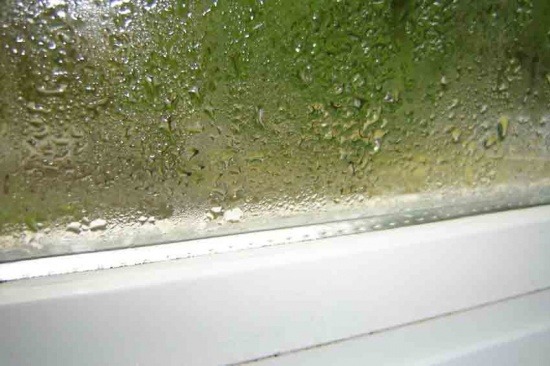MENU



Condensation forms when moist, warm air hits a cool surface. The air directly over the surface cools down, which makes it unable to hold as much moisture. Any moisture it can no longer hold onto settles onto the cool surface. One common place to see condensation is on the insides of your windows. Here are five facts you need to know if you see condensation on the windows of your Indianapolis home this summer.
1. Interior condensation does not mean your windows are leaky.
It’s important to distinguish between condensation on the inside of the windows — where you can easily wipe it away — and condensation between the glass. Condensation between the glass means your windows are leaking and are therefore losing efficiency. Interior condensation, on the other hand, can occur even when your windows are working properly. It is more of an issue with lower-quality, less efficient windows, but can appear even on high-efficiency windows when conditions are appropriate.
2. Interior condensation can damage wooden windows if left unaddressed.
You do not have to run out and replace your windows the second you spot interior condensation. You should, however, take some steps to get rid of the condensation. Otherwise, the consistent exposure to moisture may cause the window sashes and frames to decay, especially if they are made from natural wood. Continuous interior condensation can cause window damage that eventually leads to air leaks and the appearance of condensation between the glass panels. Once the frame is moist, mold may also begin to grow. This can lead to allergy symptoms, nausea, and even asthma attacks.
3. Lowering the humidity will stop interior window condensation from forming.
One reason condensation is so common in Indianapolis homes in the summer is because the area has such humid weather. Humidity from the outdoor air soon ends up in your home. When temperatures drop overnight and your windows cool off, that humidity collects as condensation on the inside of your windows. If you lower the humidity level of your indoor air to the recommended 30 – 45%, you should not notice any more condensation. Install a whole-home dehumidifier, or at least run a portable dehumidifier in the rooms where the most condensation is seen.
4. Lowering your indoor temperature helps prevent condensation, too.
Condensation is more likely to appear when the temperature outside drops and your house is still very warm. If you turn your thermostat down a couple of degrees, you should notice less condensation once the extra moisture initially settles out of the air. The smaller the difference between your indoor and outdoor temperatures, the less condensation you will notice.
5. High-efficiency windows can lead to less condensation.
While interior condensation alone should not prompt you to replace your windows, you may want to invest in new windows if prolonged condensation has caused your windows to become leaky and deteriorated. New windows are specially designed to reduce heat transfer, which should cut back on condensation buildup. Window materials like Fibrex®are also more resistant to rot and moisture damage than wood. Plus, Fibrex won’t warp and crack like vinyl, so you don’t have to worry as much about moisture between the glass.
If years of condensation buildup have harmed your windows, contact Renewal by Andersen to schedule a free consultation in your Indianapolis home. We’ll recommend the best, most efficient windows for your needs.